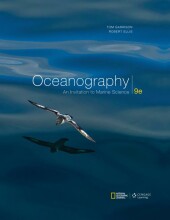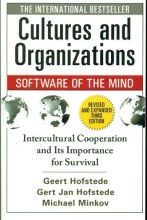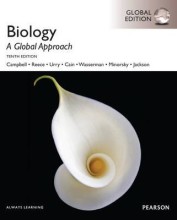Try our study magic for free
Summary: Oceanography: An Invitation To Marine Science | 9781305480575 | Tom S Garrison
- This + 400k other summaries
- A unique study and practice tool
- Never study anything twice again
- Get the grades you hope for
- 100% sure, 100% understanding
a PDF, study it super fast
- No sign up, email or credit card needed!
- AI makes unlimited flashcards
- Get unlimited quizzes and tests
- Ask AI anything
- No sign up, email or credit card needed!
- Have and keep perfect overview
- Make flashcards, notes and mind maps
- Review, test and score!
Read the summary and the most important questions on Oceanography: An Invitation to Marine Science | 9781305480575 | Tom S. Garrison
-
1 The Origin of the Ocean
-
1.1 Earth is an Ocean World
This is a preview. There are 2 more flashcards available for chapter 1.1
Show more cards here -
Where can most water be found on Earth?
Most water is trapped within Earth's hot interieur compared to the oceans and the atmosphere. -
What is the average depth of the ocean and its coverage of the Earth's surface?
The average depth of the ocean is 3682 meters and its coverage is 331 million square kilometers. -
1.2 Marine Scientists use the Logic of Science to Study the Ocean
This is a preview. There are 2 more flashcards available for chapter 1.2
Show more cards here -
How can 'marine sciences' or 'oceanography' be defined?
It is the process of discovering unifying principles in data obtained from the ocean, its associated life-forms and its bordering lands. There are various disciplines within marine sciences, for instance geologists, physical oceanographers and marine engineers. -
What is a 'hypothesis'?
A tentative explanation for the observation or measurement. It is a speculation about the natural world that can be tested and verified or disproved by further observations and controlled experiments. -
What is a 'theory'?
A statement that explains the observations. Hypotheses consistently supported by observation, experiment or historical exploration often evolve to become a theory. -
1.3 Stars from Seas
This is a preview. There are 2 more flashcards available for chapter 1.3
Show more cards here -
How were the sun and planets, including Earth, formed?
They condensed from a cloud of dust and gas enriched by the recycled remnants of exploded stars. -
1.3.1 Stars Formed Early in the History of the Universe
-
How did the universe come into existence?
We know the universe has a beginning. Around 13.7billion years ago, there was the big bang. All the mass and energy is believed to have beenconcentrated at ageometric point (unknown size); the moment when theexpansion of the universe began. We don't know whattriggered theexpansion . -
What happened after the big bang?
The very young universe was extremely hot; but as it expanded, it cooled. About 1 million years after the big bang, the earth had cooled down enough for atoms to be formed from energy and particles that were dominantly present in that time. Most of the atoms were hydrogen. 1 billion years after the big bang, this matter began to form the first galaxies and stars. -
1.3.2 Stars and Planets are Contained within Galaxies
This is a preview. There are 1 more flashcards available for chapter 1.3.2
Show more cards here -
What is a 'galaxy'?
A galaxy is a huge,rotating aggregation of stars, dust, gas and otherdebris held together by gravity. Our galaxy is called the 'Milky Way'. Every galaxy contains 100 billion stars and there are probably 100 billiongalaxies in the universe. -
At what speed are we moving around the galaxy?
We are moving at 280 km/second and so we have made 20 circuits of the galaxy since the ocean was formed. One circuit takes about 230 million years.
- Higher grades + faster learning
- Never study anything twice
- 100% sure, 100% understanding
Topics related to Summary: Oceanography: An Invitation To Marine Science
-
The Origin of the Ocean - Stars from Seas - Stars make Heavy Elements form Lighter Ones
-
The Origin of the Ocean - Stars from Seas - Solar Systems form by Accretion
-
The Origin of the Ocean - Earth, Ocean, and Atmosphere Accumulated in Layers Sorted by Density
-
The Origin of the Ocean - Life Probably Originated in the Ocean
-
The Origin of the Ocean - Are There Other Ocean Worlds?
-
A History of Marine Science - Understanding the Ocean Began with Voyaging for Trade and Exploration
-
Earth Structure and Plate Tectonics - Pieces of Earth's Surface Look Like They Once Fit Together
-
Earth Structure and Plate Tectonics - The Study of Earthquakes Provides Evidence for Layering
-
Earth Structure and Plate Tectonics - Earth's Inner Structure Was Gradually Revealed - Each of Earth's Inner Layers Has Unique Characteristics
-
Earth Structure and Plate Tectonics - The Breakthrough: From Seafloor Spreading to Plate Techtonics
































